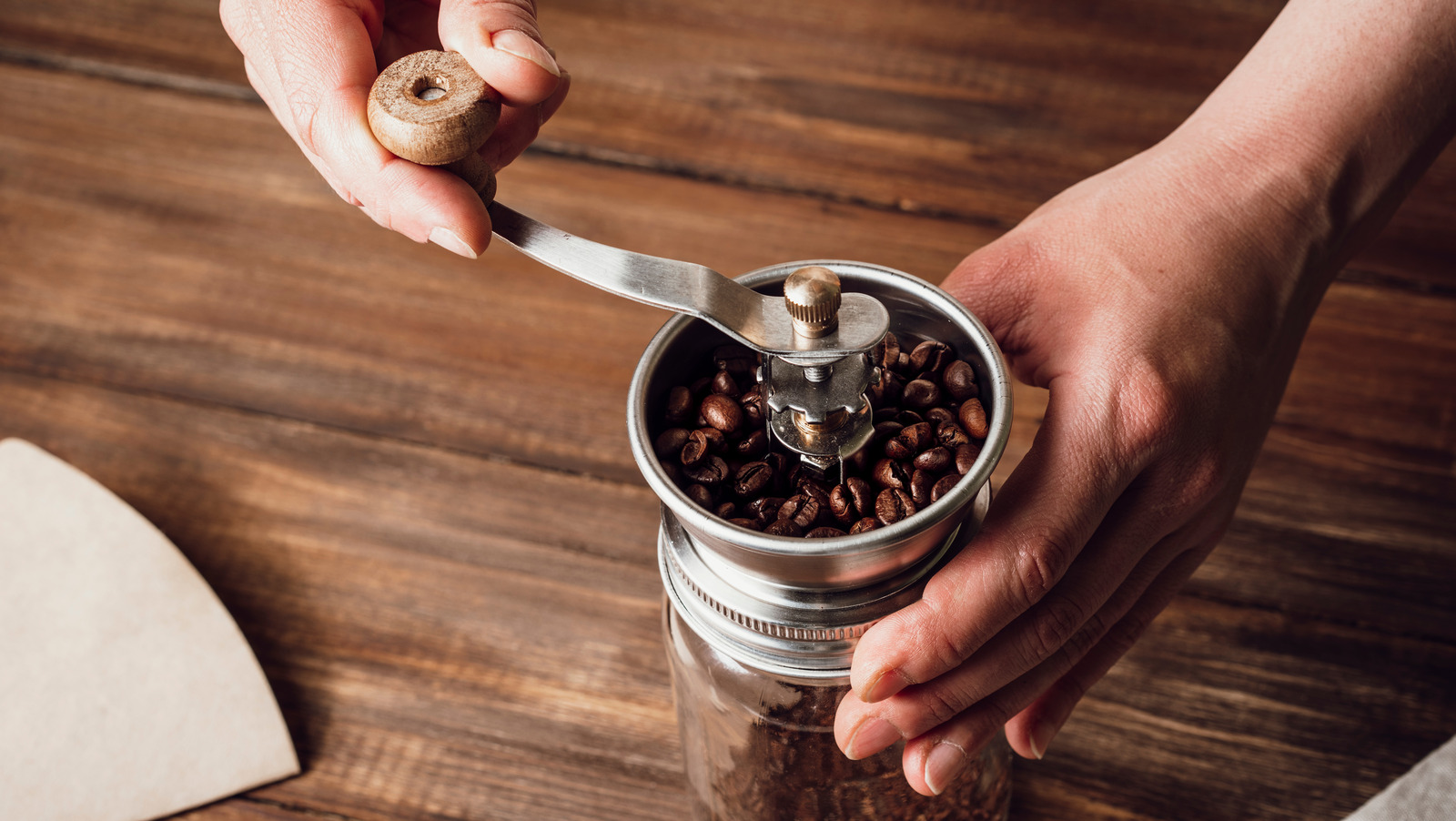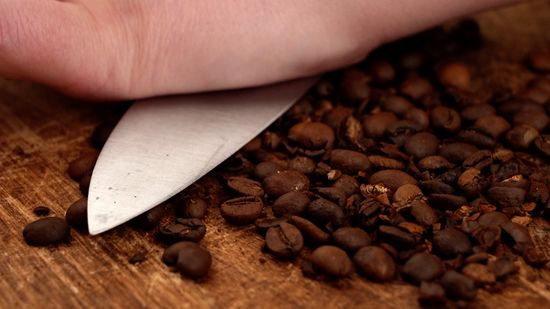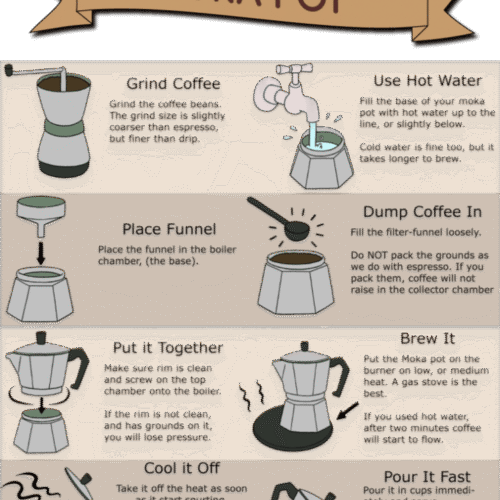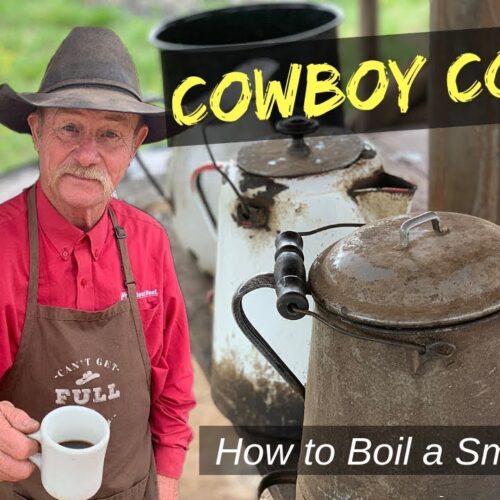To grind coffee beans without a grinder, use a blender, rolling pin, or mortar and pestle. These methods can achieve a consistent grind.
Grinding coffee beans without a grinder might seem challenging, but it’s entirely possible with common kitchen tools. Freshly ground coffee beans can significantly enhance your coffee’s flavor and aroma. Using a blender, rolling pin, or mortar and pestle offers practical solutions for achieving the desired grind consistency.
Each method provides a distinct approach, catering to different preferences and available tools. Whether you need a coarse or fine grind, these techniques can help you enjoy a fresh cup of coffee. With a bit of effort and patience, you can easily grind coffee beans at home without a grinder.

Credit: www.wikihow.com
Using A Blender
Grinding coffee beans without a grinder might seem challenging, but using a blender can be a simple and effective solution. Many people have blenders at home, making this an accessible option for fresh coffee. Follow these steps to ensure your coffee beans are ground perfectly.
Step-by-step Guide
- Measure the Coffee Beans: Decide the amount you need. Using too many beans can overwhelm the blender.
- Set Up the Blender: Ensure the blender is clean and dry.
- Add the Coffee Beans: Pour the measured beans into the blender.
- Pulse the Blender: Use short bursts to grind the beans. This helps prevent overheating.
- Check the Consistency: Open the blender to see if the grind is even. Repeat pulsing if needed.
- Transfer the Grounds: Pour the ground coffee into a container for storage or brewing.
Tips For Consistent Results
- Use Small Batches: Grind small amounts at a time for uniform consistency.
- Pulsing Technique: Short pulses are better than continuous blending. This prevents overheating.
- Shake the Blender: Gently shake the blender between pulses. It helps beans move closer to the blades.
- Check and Stir: Open the blender and stir the beans to ensure even grinding.
- Monitor the Heat: Blenders can heat up. Let it cool if it gets too hot.
Using a blender to grind coffee beans is a practical solution. Follow these steps and tips to achieve great results every time.
Mortar And Pestle Method
Grinding coffee beans without a grinder may seem challenging. The Mortar and Pestle Method is an excellent alternative. This ancient technique provides control over the grind size. It’s also a fun way to enjoy coffee-making.
Traditional Technique
The mortar and pestle method is a time-honored technique. People used this method long before electric grinders existed. It is simple and requires minimal tools. A sturdy mortar and pestle set is all you need.
First, place a small amount of coffee beans in the mortar. Use the pestle to apply a gentle force on the beans. Rotate and crush them until you get the desired grind. Be patient and use steady, even pressure. This ensures an even grind without damaging the beans.
Achieving Desired Grind Size
With the mortar and pestle, you can achieve various grind sizes. This depends on the amount of force and time you use. For a coarse grind, apply less pressure and grind briefly. For a fine grind, apply more pressure and grind longer.
Here is a simple guide to help you:
| Grind Size | Pressure | Grinding Time |
|---|---|---|
| Coarse | Light | 1-2 minutes |
| Medium | Moderate | 3-4 minutes |
| Fine | Heavy | 5+ minutes |
Follow these steps for consistent results:
- Place a small amount of beans in the mortar.
- Use the pestle to crush the beans.
- Rotate the pestle for an even grind.
- Check the grind size and adjust pressure as needed.
Grinding coffee beans with a mortar and pestle is rewarding. It gives you complete control over the grind size. Enjoy the process and the fresh coffee aroma.
Hammer Time
Grinding coffee beans without a grinder might seem challenging. With a hammer, it’s possible and effective. This method, called “Hammer Time,” is surprisingly simple. Follow these steps to crush your beans without a grinder.
Safety Precautions
Before starting, ensure safety. Use a sturdy surface like a wooden or stone countertop. Place a thick towel under your plastic bag or parchment paper to avoid damage. Keep your fingers away from the hammer’s path. Wear safety glasses to protect your eyes.
Effective Crushing Tips
- Choose the right bag: Use a heavy-duty plastic bag to hold the beans. Thin bags might tear easily.
- Use parchment paper: If you don’t have a plastic bag, use parchment paper. Fold it securely around the beans.
- Spread evenly: Spread the beans in a single layer inside the bag or paper. This ensures even crushing.
- Hammer properly: Use short, controlled taps. Avoid heavy, forceful hits that might cause the bag to burst.
- Check consistency: Periodically check the consistency of your coffee grounds. Repeat until you achieve the desired texture.
Using a hammer might seem unconventional, but it works well. Follow these tips to grind coffee beans effectively and safely. Enjoy your freshly ground coffee without a grinder!

Credit: www.tastingtable.com
Rolling Pin Technique
The Rolling Pin Technique is an effective way to grind coffee beans without a grinder. It’s simple and uses common kitchen tools. Follow these steps for a perfect grind.
Preparation Steps
- Gather your supplies: a rolling pin, a ziplock bag, and coffee beans.
- Place the coffee beans in the ziplock bag.
- Seal the bag, ensuring no air is inside.
- Find a flat, sturdy surface for rolling.
Getting An Even Grind
Start by spreading the beans evenly in the bag. Use the rolling pin to crush the beans gently. Apply even pressure as you roll back and forth.
Repeat this process until you get the desired grind size. For a finer grind, apply more pressure. For a coarser grind, use less pressure.
Check the consistency of the grind often. Adjust your rolling technique as needed.
| Grind Size | Pressure Level | Rolling Time |
|---|---|---|
| Fine | High | 2-3 minutes |
| Medium | Medium | 1-2 minutes |
| Coarse | Low | Less than 1 minute |
Once you achieve the desired grind, transfer the coffee grounds to your coffee maker. Enjoy your fresh, homemade coffee!
Using A Food Processor
Grinding coffee beans without a grinder might seem challenging. But, using a food processor can be an effective solution. It is a common kitchen appliance that can produce a decent coffee grind.
Pros And Cons
Using a food processor has its benefits and drawbacks. Here’s a quick overview:
| Pros | Cons |
|---|---|
| Most homes have a food processor. | Grind consistency might vary. |
| Easy to use and clean. | Can be noisy. |
| Handles larger quantities of beans. | May not achieve a fine grind. |
Optimal Settings
To get the best grind from your food processor, follow these settings:
- Start with short pulses to break the beans.
- Use a medium setting for a coarse grind.
- Use a high setting for a finer grind.
Be sure to check the grind consistency often. Over-processing can lead to a powdery texture, which is not ideal for most brewing methods.
Knife Method
Grinding coffee beans without a grinder can be a challenge. One effective method is using a knife. This method requires a bit of skill, but it can yield great results.
Proper Cutting Technique
Using a chef’s knife is essential for this method. Place the coffee beans on a cutting board. Use the knife to press down on the beans. Avoid using the tip of the knife. Instead, use the flat side of the blade. This applies even pressure on the beans.
Once the beans are crushed, start chopping them. Use a rocking motion. This ensures you do not lose control of the knife. Keep your fingers tucked in for safety.
Ensuring Uniformity
Uniformity in coffee grounds is important. It affects the flavor of your brew. Spread the crushed beans out on the board. Check for any large pieces. Chop these pieces again to achieve even size.
Use a sifter to separate fine and coarse grounds. Repeat the chopping process if needed. This will help you achieve a more consistent grind size. Uniform grounds make for a better-tasting coffee.

Credit: www.youtube.com
Frequently Asked Questions
How To Grind Coffee Beans Manually?
Use a manual burr grinder for even coffee grounds. Adjust the grind size to your preference. Place beans in the grinder. Turn the handle clockwise. Collect the ground coffee.
Can You Grind Coffee Beans In A Blender Or Food Processor?
Yes, you can grind coffee beans in a blender or food processor. Use short pulses to avoid overheating.
How To Make Coffee With Whole Beans Without Grinding?
To make coffee with whole beans without grinding, use a cold brew method. Soak beans in water for 12-24 hours, then strain. Enjoy!
Can You Grind Coffee Beans With A Stick Blender?
You can grind coffee beans with a stick blender, but results may be inconsistent. A dedicated coffee grinder is better.
Conclusion
Grinding coffee beans without a grinder is easier than you think. With simple household tools, fresh coffee is achievable. Experiment with different methods to find what works best. Enjoy the rich flavors and aromas of freshly ground coffee. Embrace the process and savor each cup.
Happy brewing!








